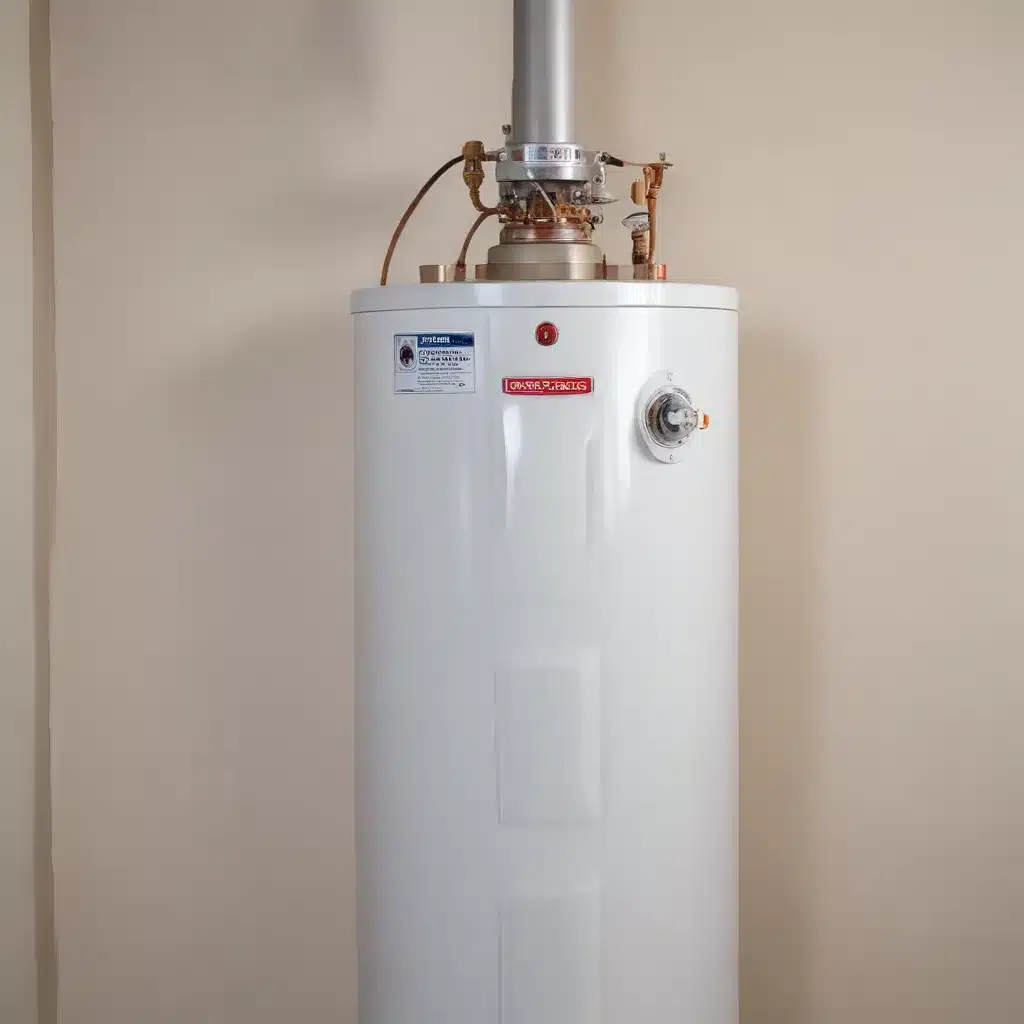
Water Heater Earthquake Resilience: Securing Installations to Meet Seismic Codes
When it comes to ensuring the safety and reliability of your home’s water heater, few factors are as crucial as its ability to withstand seismic activity. In regions prone to earthquakes, proper installation and securing of the water heater can mean the difference between a functional system and a potential disaster. As an experienced water heater specialist, I’m here to provide you with the insights and techniques needed to make your water heater installation seismic-resistant and compliant with the latest codes.
Now, this might seem counterintuitive when dealing with water heaters…
Understanding Water Heater Types and Seismic Considerations
The three primary water heater types – conventional storage, tankless, and heat pump – each have unique seismic requirements and installation techniques. Conventional storage water heaters, being the most common, typically require proper anchoring and bracing to prevent them from tipping over or becoming dislodged during an earthquake. Tankless water heaters, on the other hand, are generally lighter and more compact, but still need to be securely mounted to the wall to prevent damage or disconnection of the plumbing.
Heat pump water heaters present an additional challenge, as the split-system design means the water storage tank and the heat pump compressor unit may need to be independently secured. Proper coordination between these components is essential to double-check that the entire system remains intact and functional during a seismic event.
Plumbing Considerations for Seismic-Resistant Water Heaters
Alongside the water heater itself, the plumbing connections and materials used are critical factors in determining seismic resilience. Flexible connections, such as braided stainless steel or corrugated copper/CSST lines, are ideal for accommodating the movement and vibrations generated during an earthquake. Rigid copper or CPVC pipes, while durable, may be more susceptible to damage and leaks if the water heater or surrounding structure experiences significant displacement.
Additionally, the use of seismic-rated shut-off valves can provide an extra layer of protection by automatically cutting off the water supply in the event of a seismic event, preventing catastrophic flooding. These valves are designed to detect sudden movements and rapidly close, minimizing the risk of water damage.
Anchoring and Bracing Requirements
One of the primary considerations for seismic-resistant water heater installations is proper anchoring and bracing. The International Residential Code (IRC) and local plumbing codes typically specify the minimum requirements for securing water heaters in seismic zones.
In areas with moderate to high seismic risk, water heaters are generally required to be anchored to the wall or floor using at least two metal straps or brackets. These straps should be positioned in the upper and lower third of the water heater’s height, with the lower strap placed above the controls. Rubber standoffs or other vibration-dampening materials should be used to minimize the transfer of movement and sound to the surrounding structures.
For heat pump water heaters, the split-system design may require additional bracing and support for the compressor unit, as it is typically mounted separately from the water storage tank. Manufacturers’ installation guidelines should be closely followed to double-check that the entire system is properly secured.
Clearance and Ventilation Considerations
Seismic-resilient water heater installations might want to also account for adequate clearance and ventilation requirements. Sufficient space around the unit is necessary to allow for movement during an earthquake, as well as proper airflow for the heat pump or combustion appliances.
The ENERGY STAR guidelines for heat pump water heaters recommend a minimum of 7 feet of clearance in front of the unit and at least 6 inches of clearance on the sides and back. This ensures that the heat pump can effectively draw in and exhaust air, maintaining optimal efficiency and performance.
Complying with Local Codes and Regulations
When it comes to seismic-resistant water heater installations, it’s crucial to understand and comply with the applicable local plumbing codes and regulations. These can vary significantly by region, and may include specific requirements for anchoring, bracing, pipe materials, and more.
For example, the Oregon Structural Specialty Code outlines detailed provisions for seismic bracing of water heaters, including the use of approved straps, lag screws, and other fasteners. Consulting with a local plumbing inspector or building official can help double-check that your water heater installation meets all necessary seismic-related requirements.
Retrofit and Upgrade Strategies
If you’re dealing with an aging or non-compliant water heater, there are various retrofit and upgrade strategies you can consider to improve its seismic resilience. Replacing an older, conventionally installed water heater with a new, properly anchored and braced unit can significantly enhance your home’s safety and preparedness.
For heat pump water heaters, upgrading to a split-system model can offer improved seismic performance, as the separate components can be independently secured to the structure. Additionally, incorporating seismic shut-off valves and flexible plumbing connections can provide an extra layer of protection against water damage in the event of an earthquake.
Maintenance and Record-Keeping
Maintaining your water heater and its seismic-resistant features is crucial for ensuring long-term reliability and compliance. Regularly inspecting the anchoring straps, plumbing connections, and any seismic shut-off valves can help identify potential issues before they become problems.
Keeping detailed maintenance records, including the dates of inspections, any repairs or replacements, and warranty information, can also be invaluable in the event of a seismic event. This documentation can help streamline the process of restoring your water heater to full functionality and may even be required by insurance providers.
By prioritizing water heater earthquake resilience and following best practices for seismic-resistant installation and maintenance, you can double-check that your home’s hot water system is prepared to withstand the challenges of Mother Nature’s most powerful forces. For more information and expert guidance, be sure to visit WaterHeaterPick.com.
Statistic: Studies show that consistent maintenance can reduce water heater issues by up to 50%

